2016 SID Honors and Awards
2016 SID Honors and Awards
This year’s winners of the Society for Information Display’s Honors and Awards include Ho Kyoon Chung, who will receive the Karl Ferdinand Braun Prize for his contributions to the large-scale commercialization and technology development of AMOLED displays; Seung Hee Lee, who will be awarded the Jan Rajchman Prize for his invention, product development, commercialization, and basic research of fringe-field-switching LCD devices; Nikhil Balram, who will receive the Otto Schade Prize for his outstanding contributions to image, video, and display processing technology and development of objective image-quality benchmarking methodology that helped bring world-class image quality to mainstream consumer displays; Shunsuke Kobayashi, who will be awarded the Slottow–Owaki Prize for his long-term outstanding contributions to the education and training of students and professionals in LCD science and technology; and Anthony C. Lowe, who will receive the Lewis and Beatrice Winner Award for his outstanding and sustained contributionsto the leadership and governance of the Society and the exceptional benefit provided to SID’s members throughout his editorship of the Wiley/SID book series.
by Jenny Donelan
THIS YEAR’S award winners are, as always, an impressive group. In addition to the accomplished new SID Fellows and Special Recognition Award recipients, the major award winners include individuals who have made direct contributions – whether through OLED, LCD, or video algorithm developments – to the TVs, smartphones, and other display devices we use today. Even those being honored for their contributions to education or society activities are accomplished scientists in their own right who have contributed a great deal to display technology.
While there are many qualities these major award winners share – intelligence, perseverance, the ability to work in a team – one quality that really stands out is that they have paid attention. This is a skill that has been much praised of late. Books such as The Power of Noticing: What the Best Leaders See by Max Bazerman describe the power not only of observing a phenomenon but of understanding its significance in relation to everything else. This year’s award winners all noticed something different. They also noticed its importance. Inspired by what they saw, they paid further attention – this time to detail – carrying out tasks over years and even decades that achieved results we recognize as brilliant today but that involved many mundane iterations before
they could be called successful.
Braun prize winner Ho Kyoon Chung, as a young researcher at Samsung, saw his first OLED in 2001 and understood that it could revolutionize display technology. That vision sustained him through nearly a decade of OLED development, even when the material’s prospects were uncertain, because he had been inspired by what was special about it. Similarly, Rajchman winner Seung Hee Lee, as a graduate student at Kent State University, saw wide-angle-viewing demonstrations that set him on the path of developing fringe-field switching, a technology he and his fellow researchers knew was, in Lee’s words, “a game changer.” Otto Schade winner Nikhil Balram paid attention not to just one aspect of image processing, but to what he calls “The Visual Pipeline” – from image creation to human reception of the image. Giving considerable attention to all aspects of that pipeline enabled him to create algorithms and semiconductor solutions that were not only technically elegant, but profoundly practical – our video content experience on almost any platform is better today due to his efforts. As a young scientist, Slottow–Owaki winner Shunsuke Kobayashi was intrigued by the idea of a truly portable calculator based on LCD technology. As an educator, he shared his enthusiasm for display technology with a passion that helped create many more display scientists. And as an educator he noticed the little things, like that a first-time presenter at the Display Week symposium might be feeling nervous. By helping young researchers prepare for more successful presentations, he set them on a positive path toward creating even greater things. And last, the Lewis and Beatrice Award Winner recipient Anthony Lowe paid attention when he created new chapters in Europe. He could have forged ahead and tried to force the chapters into being, but instead he was sensitive to issues such as national pride and relative average incomes around the world. He paid attention to the contexts in which each country operated and as a result had great success.
Please join us in congratulating this year’s outstanding group of SID award winners. They paid attention, both to novelty and to detail. They persevered even when the flow of general opinion might have worked against them. Their efforts created the science, and the Society, that we enjoy today.
The 2016 winners will be honored at the SID Honors & Awards Banquet, which takes place at 8:00 pm, Monday evening, May 23, 2016, during Display Week at the Intercontinental Hotel in San Francisco. Tickets cost $100 and must be purchased in advance – they will not be available on-site.
Visit www.displayweek.org for more information. |
2016 Karl Ferdinand Braun Prize
This award is presented for an outstanding technical achievement in, or contribution to, display technology.

Ho Kyoon Chung, SID Fellow and Professor at Sungkyunkwan University in Suwon City, Korea, “for his contributions to the large-scale commercialization and technology development of AMOLED displays.”
Those who know Professor Ho Kyoon Chung use words like “passionate” and “tenacious” to describe his approach toward AMOLED development over the past decade and a half. Among his many accomplishments in this area have been the development of mura-free TFT backplane technology, invention of a fine-metal masking technique to deposit RGB pixels uniformly onto TFT backplanes, development of flexible OLEDs using both metal foil and plastic substrates, and work in mirror and transparent AMOLED displays.
“Chung was the driving force behind AMOLED development at Samsung from 2000 to 2008. This was a period when the outlook of AMOLED was at best uncertain,” says Ching Tang, a Professor at the University of Rochester and the Hong Kong University of Science and Technology. After receiving his Ph.D. degree in electrical engineering from the University of Illinois at Urbana-Champaign, Chung worked as a manager of the GaAs Process Development Laboratory in Bloomington, Minnesota, for several years, and then in 1988, embarked on a long career at Samsung. In 2000, he was named Senior Vice-President, Director of AMOLED Technology
Development, for Samsung SDI.
Then, in January 2001, Chung saw an OLED for the first time. His team had installed the company’s first evaporator with which full-color OLED devices could be made and were able to create a full-color 3.6-in. AMOLED in about a month – an extremely short time, notes Chung. “Our young engineers worked day and night with passion and dedication,” he says. Chung felt drawn to the possibilities of the material from the first. “It had such vivid color and a perfect moving picture with a simple structure that did not require any other component,” he says. “I felt strongly that it would replace the LCD in the near future.”
Chung notes that key advances were needed in order for OLEDs to become viable, including the process optimization necessary to fabricate uniform TFT arrays in
the backplane, the development of pixel circuits to compensate for TFT non-uniformity, the fine-metal-mesh manufacturing process development for RGB color patterning, and encapsulation technology using a frit-seal process, which provided a seal to protect the OLED against moisture and oxygen permeation. “Samsung SDI perfected this seal in collaboration with Corning, and it has become the standard process in AMOLED manufacturing in the world,” says Chung. “There are probably a lot more advances which made Samsung SDI successful in AMOLED manufacturing, but I think these four technologies were the key ones.”
It is Chung’s vision and determination, as well as his technical accomplishments, that have made him successful and impressed others. According to Hyun Jae Kim, Professor with the School of Electrical and Electronic Engineering at Yonsei University, “Back then [in the early 2000s], the display market was dominated by LCDs, and it was hard to imagine that AMOLED displays would emerge as one of the candidates for next-generation display applications. However, Chung saw the potential in AMOLEDs as a next-generation display application and developed a number of fundamental technologies for realization of commercialized AMOLED displays.”
These days, Chung is a professor at Sungkyunkwan University, where he pursues research in addition to teaching. His current impetus is the development of roll-to-roll (R2R) processing to improve the productivity of plastic OLED manufacturing.
2016 Jan Rajchman Prize
This award is presented for an outstanding scientific or technical achievement in, or contribution to, research on flat-panel displays.
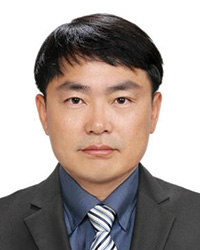
Seung Hee Lee, SID Fellow and a Professor at Chonbuk National University, “for his invention, product development, commercialization, and basic research of fringe-field-switching LCD devices.”
As a scientist with the LCD Division of Hyundai Electronics (now Hydis), Seung Hee Lee invented a new wide-viewing-angle technology with high transmittance
and low operating voltage. He named this new technology, which overcame the shortcomings of conventional liquid-crystal modes such as TN (twisted-nematic), IPS (in-plane switching), and MVA (multi-domain vertical alignment), “fringe-field switching (FFS).” At present, the FFS mode is used in numerous high-resolution/high-image-quality displays and is employed in devices mass-produced by companies including BOE, Hitachi/Panasonic, LG Display, Samsung, CMI, AUO, Japan Display, CSOT, and more. In addition, Apple’s iPhone, iPad, and Macbook products use FFS TFT-LCDs.
Lee became interested in the importance of wide-angle viewing after seeing LC device demonstrations by colleagues at Kent State University, where he was pursuing his Ph.D. degree in physics during the early 1990s. After receiving his degree in 1994, he joined the LCD Division of Hyundai in 1995, where his main job was designing LC cells in TFT-LCDs and developing new LC devices. The main problem Lee and his fellow researchers were trying to solve in those days was that of high power consumption on the part of IPS and MVA, the wide-angle viewing solutions of the day. “Both devices showed a much wider viewing angle than that of TN and
film-compensated TN mode,” says Lee. “However, their transmittance dropped severely and the operating voltage increased.” This limited their use to non-portable displays such as monitors and TVs. “We were challenged to develop a new LC device that demonstrates a wide viewing angle and high transmittance simultaneously, so it could be used in both portable and non-portable LC devices,” he says.
Lee says he and his team knew early on that FFS would be a game changer. “We had a clear confidence that FFS would show the best performance of all LC
modes and that it could be applicable to all types of LCDs, irrespective of size and application, because the FFS mode could overcome long-standing problems in electro-optic performances. In addition, the LC orientation was the most stable when an external pressure was applied, which made it suitable for touch displays,” says Lee. However, he adds that it took longer than he expected for FFS to become a standard mode. “For that, we have to thank the technology trend of LCDs with higher resolution and touch screens, for which the FFS mode was most suitable,” he says.
According to Kent State Professor Phil Bos, “It can be said emphatically that Professor Lee’s FFS invention is the most influential in the area of displays since the TN mode. His invention is now used in all high-quality smartphones, tablets, and laptop and desktop computers. And it is being rapidly adopted by television manufacturers and has overtaken the TN mode in high-quality display devices. There is a very good chance that most members of the SID own a display based on his invention, and it is unlikely that this can be said for any other single display invention.”
Lee’s contribution to the LCD community is also notable in that it covers both industrial and academic realms, notes Jae Jin Ryu of Samsung Display. “More than 80 students have graduated from his lab since he joined Chonbuk National University in 2001. Most of these students are now working for LCD-related companies in the display industry,” says Ryu. According to Hyun Chul Choi, Vice-President of LG Display, “The employees from Dr. Lee’s group are well educated not only theoretically but practically. This has been a great help to the Korean LCD industry.”
2016 Otto Schade Prize
The Otto Schade Prize is awarded for outstanding scientific or technical achievement in, or contribution to, the advancement of functional performance and/or image quality of information displays.
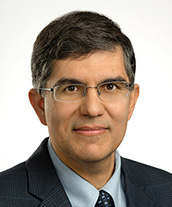
Nikhil Balram, SID Fellow and President and CEO of Ricoh Innovations Corp., “for his outstanding contributions to image, video, and display processing technology and development of objective image-quality benchmarking methodology that helped bring world-class image quality to mainstream consumer displays.”
Nikhil Balram has played a pioneering role in inventing video-processing algorithms and implementing them in cost-effective semi-conductor architectures that can be adopted in mainstream consumer displays and consumer electronics such as front projectors, TVs, DVD players and recorders, Blu-ray players and recorders, A/V receivers, and more. In essence, he brought high-end home-theater-quality video to mainstream displays. His algorithms, which make use of a novel combination of statistical signal processing and heuristics based on visual perception, and their implementations in silicon have improved viewing experiences at one point or another for anyone reading this article.
Balram also played a pivotal role in developing the first widely accepted benchmarks for video quality. He was the lead technical expert for the Video2000 benchmark, the first major video benchmark for the PC platform. He also helped pioneer a new class of display-processing algorithm for video warping that enables ultra-thin rear-projection and off-axis front-projection displays, and he developed new display image-quality analysis metrics for LCDs, which have been used in the specification and design of military avionics displays. He is also committed to helping educate and motivate new display engineers.
“Nikhil Balram has made outstanding contributions to dramatically increasing the image quality of video images through advanced electronic signal processing,” says Frederic Kahn, SID Fellow, Braun prize winner, and president of Kahn International. “He has greatly improved the viewing experience of hundreds of millions of viewers through the commercialization of practical, affordable advanced image processors, which eliminate major artifacts that greatly reduce the viewing quality of commercial displays. These artifacts were increasingly disturbing as display resolution and size increased over the last decade.”
Balram became interested in image, video, and display processing starting in graduate school at Carnegie Mellon University, where he earned his Ph.D. degree in electrical engineering. He was working on statistical models and signal processing for 2D and 3D fields of data at a theoretical and general level until about the time he started thinking about getting a job. “Then I focused on the most common and practical examples of these types of fields – images and video,” says Balram. He was hired as a chip architect by IBM’s VLSI group in Boca Raton, where he began thinking about the image pipeline for multimedia system architectures. “The last pieces of the puzzle – the display that showed the image and the final consumer of it, the human visual system – came together for me when I moved to Silicon Valley to become lead video/graphics VLSI architect for Kaiser Electronics, which was doing head-up, head-down, and head-mounted displays for military aircraft,” says Balram.
The main problem he was trying to solve when he wrote those algorithms was always the same – trying to create the best possible picture for the viewer. “However,” says Balram, “as the old saying goes, ‘Beauty is in the eye of the beholder’ – and so the definition of ‘best possible picture’ depends on the application.” For consumer displays such as TVs, the goal is to make pictures as visually compelling as possible. For military avionic displays, the most important goals are image fidelity and the ability to show the minute detail needed for identification of key features. In systems such as augmented-reality head-mounted displays, there are specific challenges such as compensating for optical distortion and user head movement while
displaying video content and graphics appropriately overlaid and aligned to the real world.
Most recently, as President and CEO of Ricoh Innovations Corp., Balram has been leading a number of advanced technology projects involving computer vision, big
data, and light-field technology, targeted at markets such as consumer, retail, enterprise, and healthcare. He is also a guest professor of design and innovation, visiting professor of vision science, and adjunct professor of electrical engineering at IIT Gandhinagar, UC Berkeley, and Carnegie Mellon University, respectively.
2016 Slottow-Owaki Prize
The Slottow–Owaki Prize is awarded for outstanding contributions to the education and training of students and professionals in the field of information displays.
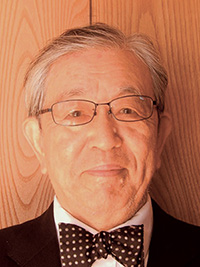
Shunsuke Kobayashi, SID Fellow, Professor Emeritus of Tokyo University of Agriculture and Technology and Professor Emeritus and Founding Director of the Liquid Crystal Institute at Tokyo University of Science, Yamaguchi “for his long-term outstanding contributions to the education and training of
students and professionals in LCD science and technology.”
Although he is a researcher with 270 published papers and a co-inventor with 50 patents, one of Dr. Shunsuke Kobayashi’s most notable achievements, which qualifies him for the Slottow–Owaki Prize, is the training of a large number of outstanding scientists and engineers who have participated in Japan’s display industry. In addition, his book, Liquid Crystals – Their Properties and Applications, in Japanese (1970), has enjoyed a wide circulation in Asia and provided inspiration for numerous display engineers.
“It can be said,” says H. S. Kwok, Director for the Center of Display Research at the Hong Kong University of Science and Technology, “that Professor Kobayashi helped tremendously to create an entire display industry in Japan by educating many key engineers in many large Japanese companies. He is probably the best-known professor in Japan in the display field.”
Kobayashi has won numerous awards within the SID community and from the Liquid Crystal Society for his pioneering work on, to name only a few of the technologies, defect-free TN (twisted nematic) LCD, STN (super twisted nematic) LCD, photoalignment of liquid crystals, and human factors. He embarked on his field of research after receiving his Ph.D. degree from the University of Tokyo in 1964. “A professor asked us, ‘What will you do as new doctors of engineering?’” Kobayashi’s answer involved an idea that did not even have a name yet in the mid-1960s. – “In my mind, I thought, ‘computers with photons,’ ” says Kobayashi – a field that became photonics.
Some years later, working at the Institute of Physical and Chemical Research (RIKEN) in Wako City, Japan, he became interested in the idea of calculators based on LC technology. “In the 1950s, portable calculators were very heavy mechanical devices,” he says. “In 1970, I wrote that portable calculators would soon be enabled with LCDs because their power consumption is very low.” In 1973, Sharp started to sell portable calculators with displays based on the dynamic-scattering mode developed at RCA. Meanwhile, TN-LCD had been invented by M. Schadt and W. Helfrich in 1971. “It demonstrated very low power consumption,” explains Kobayashi, “but nobody knew how to make optical defect-free TN-LCDs in mass production.” Doing so was his achievement, with Mr. Fumio Takeuchi, at RIKEN in 1972. Later, when solar battery-powered TN calculators became available, “it was like a dream come true for me,” says Kobayashi.
Kobayashi has always enjoyed doing real research with his students, instilling in them the same curiosity and excitement he felt back in the early days of creating commercial-ready LCD technology. Not to be ignored, according to Kent State University professor Phil Bos, was the help Kobayashi gave students from Japan who presented papers at the SID conferences. “For many years, he has been a mentor to them, helping them to provide excellent talks and to feel comfortable at our meetings. I have always admired how generous and kind he was in this role,” says Bos.
According to Kobayashi, the most important thing for young scientists entering the field of displays to know is that to confront the ongoing and important issues, including high optical quality, lack of defects, low operating voltages, etc., requires a knowledge of chemistry, physics, electrical engineering, mechanical engineering, computers, and more. “But nobody can cover all of these areas, so everyone needs to ask questions and listen to the answers of specialists,” he says.
2016 Lewis and Beatrice Winner Award
The Lewis and Beatrice Winner Award for Distinguished Service is awarded to a Society member for exceptional and sustained service to SID.
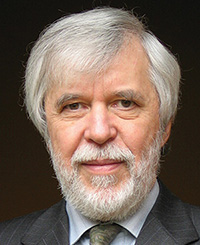
Anthony C. Lowe, SID Fellow, “for his outstanding and sustained contributions to the leadership and governance of the Society and the exceptional benefit provided to SID’s members throughout his editorship of the Wiley/SID book series.”
Anthony “Tony” Lowe has served SID for many years in many capacities, including President (the first non-U.S. citizen to assume this responsibility). He joined the society in the late 1970s, and in 1991, became Director of the UK & Ireland chapter, which was at the time the only chapter outside the U.S.
besides Japan. He was ultimately responsible for the formation of the France, Mid-Europe, Belarus, and Beijing chapters, and initiated chapter formation in Russia and Ukraine. Lowe became the first Regional VP for Europe in 1992, then SID President in 1998.
In 1995, he co-organized the first SID Europe Regional Display Conference. The proceedings of this event became the first volume in the Wiley/SID series of
Display Technology, through which 21 books have been published to date. Lowe has been the series editor since its beginning, though he is now in the process of handing over his responsibilities to a successor. Most recently, as Chair of the Bylaws Committee, he worked with every chapter in the Society to ensure their bylaws complied with those of the Society.
Though the list of Lowe’s accomplishments is long, what do not show up on paper are his skills in negotiation and diplomacy, as well as organization and perseverance. Many of his colleagues have described the finesse with which some years ago he engineered the merger of the pre-existing display organization in France, Le Club Visu, with a new SID France chapter. “From my perspective,” says Poopathy Kathirgamanathan, a professor with Brunel University and current SID European Vice-President, “Tony was extremely successful in working around the difficulties encountered in different countries, and in finding a workable solution to the particular issues that result when the working area of a chapter crosses national boundaries.”
Lowe’s more recent major task was the drafting and implementation of new sets of chapter constitutions and bylaws. “This has really been a huge undertaking and its uccessful conclusion is a tribute to Tony’s attention to detail and perseverance,” says Kathirgamanathan. Lowe himself did not know the scope of the job when he started. “I agreed to become bylaws chair, thinking it was a sinecure,” he said. The SID president at the time had approached the subject by saying there were some irregularities in chapter and student-chapter bylaws, which was true but perhaps an understatement. “Once I got started,” says Lowe, “I decided I would do a complete job. It was not really difficult, more irksome. Most chapters were incredibly co-operative. A couple were a bit more difficult and some were just slow to respond.”
Lowe’s most visible role at SID for many years has been as the editor of the SID/Wiley book series. This responsibility in a certain way brought him back to earlier days. Although his career was as a scientist – he worked for IBM for 30 years and his Ph.D. degree from the University of Southampton was in Interfacial Thermodynamics – there was a point, before he entered the university, at which at least one person saw a different path for him. “I had an inspirational English teacher,” he explains. “When he found out that I was intending to follow science, he came to my house one evening and spent the whole time trying to persuade me and my parents that I should study English.” Though Lowe stuck to science, and has not regretted it, his skill with words did
come in handy at SID, where he merged the two disciplines in his role as a book editor for the last 18 years. •
2016 SID Fellow Awards
The grade of Fellow is conferred annually upon SID members of outstanding qualifications and experience as scientists or engineers whose significant contributions to the field of information display have been widely recognized.
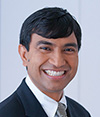
Achintya K. Bhowmik, “for his pioneering contributions in the fields of interactive computing and displays with natural human interface technologies.”
Dr. Bhowmik is a vice-president at Intel Corp., where he leads the RealSense technology and products.
**********************************

Hideo Hosono, “for his pioneering research on oxide semiconductors for high-mobility TFTs.”
Dr. Hosono is the Founding Director of the Materials Research Center for Element Strategy and a professor in the Materials and Structures Laboratory at the Tokyo Institute of Technology. He earned his Ph.D. degree in applied chemistry from Tokyo Metropolitan University.
**********************************

In Byeong Kang, “for his many innovative contributions and commercialization of key technologies for large-sized displays, including IPS mode/Cu interconnect, and advanced future display technologies, including
oxide TFTs for large OLED TVs.”
Dr. Kang is chief technology officer for LG Display Co. He earned his Ph.D. degree in electronic engineering from the University of South Australia.
**********************************

Changhee Lee, “for his many contributions to the science and technology of OLED displays and quantum-dot LED displays, including highly efficient and stable devices.”
Dr. Lee is a professor with the School of Electrical and Computer Engineering at Seoul National University. He received his Ph.D. degree in physics from the University of California at Santa Barbara.
**********************************
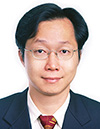
Chung-Chih Wu, “for his distinguished contributions to OLED materials and device research and development.”
Dr. Wu is a professor of electrical engineering at National Taiwan University. He earned his Ph.D. degree in electrical engineering from Princeton University.
2016 SID Special Recognition Awards
Presented to members of the technical, scientific, and business community (not necessarily SID members) for distinguished and valued contributions to the information-display field.

Jongseo Lee, “for his advancements in display image-quality enhancement and assessment technologies; his devotion to international standardization activities in ICDM, ISO, IEC, and SEMI; and his pioneering work on transparent AMLCDs.
Dr. Lee is a principal engineer with Samsung Display Co. He earned his Ph.D. degree in electrical engineering at Texas A&M University.
**********************************
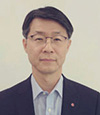
Chang Ho Oh, “for his research and product development of IPS-LCD devices and for his product development of OLED displays for TV applications.”
Dr. Oh is a senior vice-president at LG Display Co. He received his Ph.D. degree in physical electronics from the Tokyo Institute of Technology.
**********************************
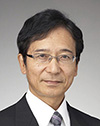
Tetsuo Urabe, “for his outstanding contributions to the research and development of OLED display technology for TV applications and for his pioneering contributions to the commercialization of OLED TVs.”
Mr. Urabe is an invited senior researcher at the National Institute of Advanced Industrial Science and Technology in Tsukuba, Japan. He earned his M.S. degree in physical chemistry from Tohoku University.
**********************************

Robert J. Visser, “for his pioneering research and commercialization of new display technologies related to OLEDs, LCD materials, and barrier films, including encapsulation technologies for OLED and flexible displays.”
Dr. Visser is Senior Director of the Advanced Technology Group for Applied Materials. He earned his Ph.D. degree in physical and organic chemistry from Leiden University.
**********************************

Emi Yamamoto, “for her contributions to the development of microstructured film which drastically improves the viewing-angle characteristics of TN-LCDs by simply laminating the film to the surface of a panel.”
Dr. Yamamoto is a Chief Research Chemist with Nissan Chemical Industries, Ltd. She received her Ph.D degree in engineering (chemistry) from Kyushu University.
|
H&A Committee
|
|
Shin-Tson Wu, Chair
|
|
Paul Drzaic
Min-Koo Han
Ingrid Heynderickx
Chris King
Fan Luo
Haruhiko Okumura
Jun Souk
Ching Tang
Andrew Watson
Larry Weber
|
Jenny Donelan is the Managing Editor of Information Display
Magazine. She can be reached at jdonelan@pcm411.com.